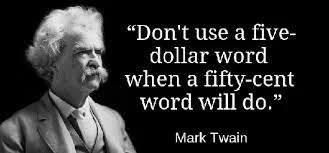How jargon suffocates your stories
Oh, jargon. All dressed up and trying to get invited to every little shindig. That fancy institutional lingo, so cozy in your messaging, sucks the blood out of your stories. Jargon stamps out approachable "story-speak" and replaces it with "institution-speak" at every turn. Let’s explore how jargon suffocates your stories.
Story-speak versus institution-speak is worth alternating.
Let's say your organization works in asset building. You could start a story with...
Michelle wanted to break the cycle of generational poverty so she began to explore asset building.
Jargon attack! No way does Michelle talk that way to herself. Better phrasing for a story would look like this:
Michelle watched her father, sighing as he went through the stack of bills at his kitchen table. She said to herself, "I refuse to work three jobs and live paycheck to paycheck like my dad." She sat down at that very table, opened her laptop, and began searching for a better way to manage her money.
...then you tell the rest of the story, including how your organization helped Michelle invest in herself, build her assets, and break the cycle of generational poverty WITHOUT EVER CALLING IT THAT IN THE STORY.
Tell a jargon-free story first. Then introduce your more complex info.
After the story, you can introduce your model and say "asset building" and "generational poverty" as much as you like. You will have shown all of those concepts in a concrete way in the story, so now your audience can handle them in the abstract in your messaging. When in doubt, ask yourself if a donor unfamiliar with your work will show up knowing the technical terms you are using. If not, do not use them in your story.
I chose asset building at random. Truth is, asset-building organizations are often good at explaining what they do. Which industries do you think use jargon the most often?
